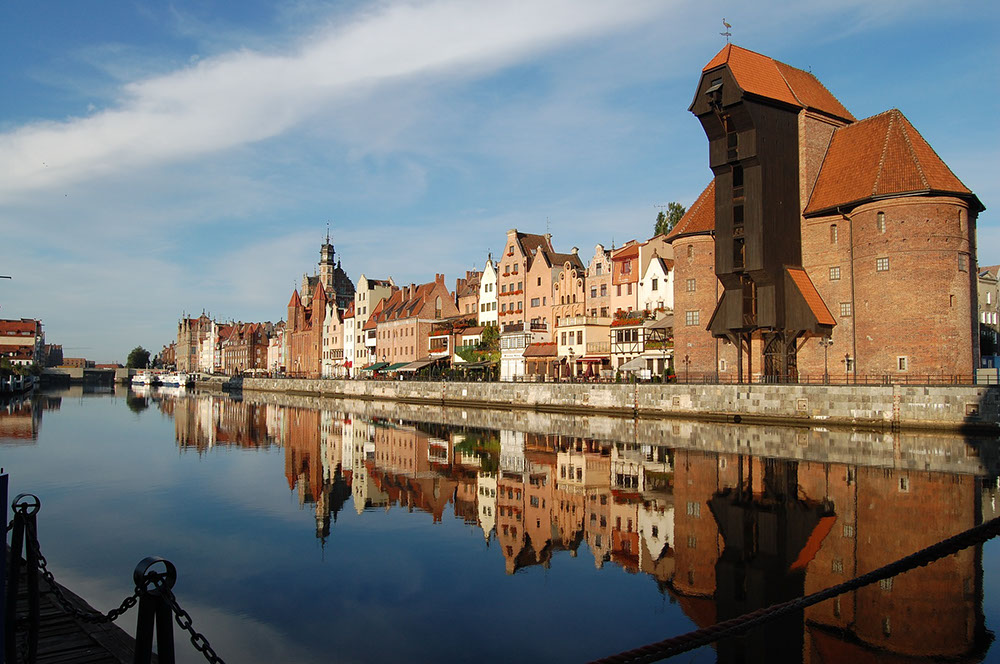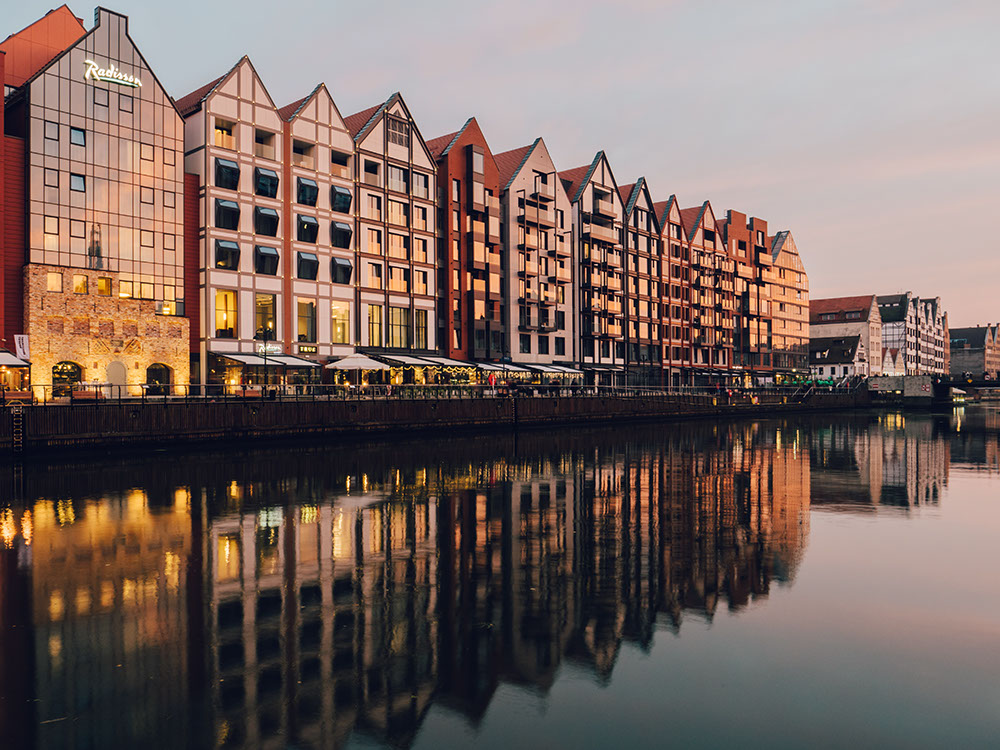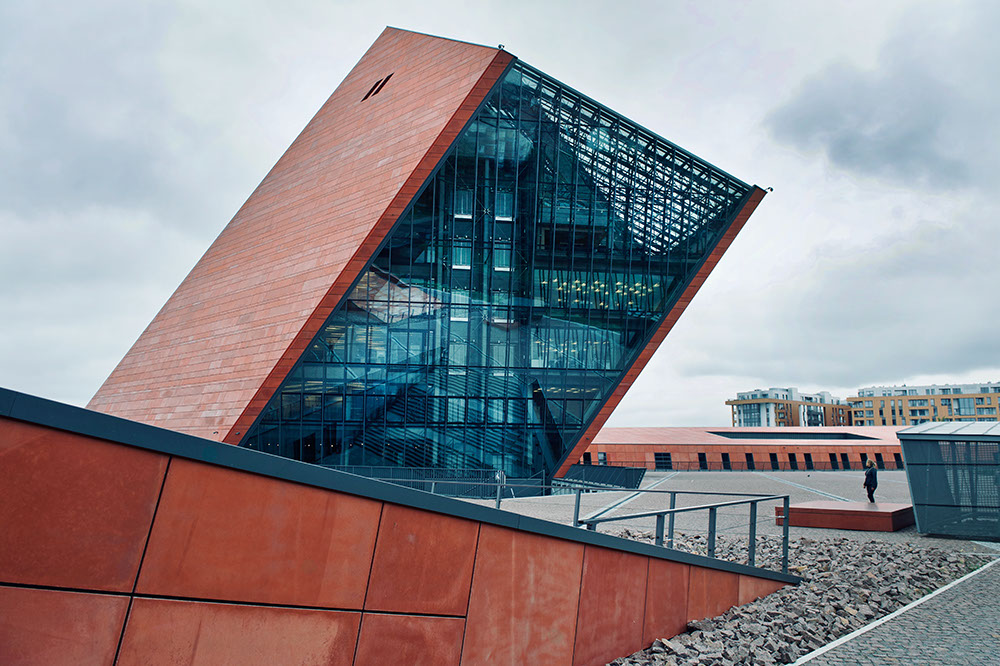10 Things to do in Gdansk
Poland's largest port flourished in medieval times as a trading town trading Baltic amber. In the 20th century, events took place in Gdansk that would influence the course of world history.
Trakt Królewski (Royal Way)

To reach the core of Gdansk and see a number of top monuments in one walk, take this horizontal route east to the Motlawa River between two city gates. Along Ulica Długa (Long Street) and then Długi Targ (Long Market), Royal Street first got its name in 1457 when the Polish king Casimir IV Jagiellon entered Gdańsk. Starting in the west at the Upper Gate and ending at the Green Gate, the street is lined with tall, narrow patrician houses painted in vivid colors and covered with gables. There are far more attractions and notable sights in Trakt Królewski than we could squeeze into one paragraph. But at Długi Targ 44 stop for a photo of Artus Court, a Renaissance meeting place and stock market, now a branch of the Gdańsk Historical Museum.
St Mary’s Church

This bustling Gothic church dates back to the 14th century and is one of the three largest brick churches in the world. You will need to set aside some time to be able to see all of this epic building that can accommodate 25,000 worshippers. It required a major reconstruction after the Second World War, but all its valuable components were saved. You can peruse treasures such as an astronomical clock from the 1460s, the high altar erected in the 1510s and a magnificent Gothic stone pietà carved in the early 15th century. If you want to climb almost 400 steps, then you will reach the top of the 77.6 meter monolithic main tower.
Fountain of Poseidon

In the Long Market, a few steps from Artus Court is an enduring symbol for Gdansk which is none other than the Neptune Fountain. The sculptor was Abraham van den Blocke, originally from present-day Kaliningrad, but of Flemish parentage. Located next to the palatial mansions where the kings of Poland would live in Gdańsk, the fountain sculpture shows Poseidon bowing his head slightly as a sign of respect. In the basin below it are decorative fish and cherubs. And if you're wondering, the fig leaf on his private parts wasn't in the original design, but was added in a 1988 restoration.
Golden House

Staying in Long Market, two doors to the right of Artus Court is a building often praised as the most beautiful in the city. It's not easy to disagree when you see the white and gold facade. With Mannerist architecture, the Golden House was built for Jan Speyman, mayor of Gdańsk in the early 17th century. Designed by Abraham van den Blocke once again, the house has the characteristic narrowness and height of Gdansk. But what it stands out for is its sculpted friezes, the 16 busts on its pilasters representing Polish kings and the statues atop its balustrade of Achilles, Antigone, Cleopatra and Oedipus.
Main Town Hall
The Central Town Hall was designed by a group of Dutch architects in the mid-16th century. You have to turn your head back to see him, but there is a life-size gilded statue of Sigismund II Augustus, the king of the period, at the top 83 meters above street level. The interior is also managed by the Historical Museum and features sumptuous state rooms in the Dutch Mannerist style. The Small Council Chamber, the Great Council Chamber, the White Chamber and the Winter Chamber have gilded stucco, coffered ceilings, marble floors, frescoes, sculptures and tapestries. You can head to the "observation gallery" for a bird's-eye view of the city and hear the 37-bell carillon chime per hour.
Crane, Γκντανσκ

Emblem of the city, the Gdańsk crane on the long Motlawa embankment dates back to the 14th century. This piece of machinery dates back to when Gdansk was in the Hanseatic League and could load or unload four tons of cargo, lifting it 11 meters high. The power came from the people, as groups of men walked inside two large wooden wheels as if they were hamsters. The crane doubled as the gate of the seaside town and was used until the 1800s. Now preserved by the National Maritime Museum, you can go to see the wheels and an exhibition about work and daily life in the port from the 1500s to the 1700s.
Dlugie Pobrzeze (Long Embankment)

Before the port was moved to the mouth of the Vistula River in the 19th century, this wharf was where all Gdansk's loading and unloading took place. At that time defense was vital, so there was a 'water gate' protecting the entrance to each of the streets running perpendicular to the river. These seven gates, the old warehouses on the opposite bank and the characteristic narrow gabled houses overlooking the water, bring to mind the maritime magic of the olden days. But while the scene is now rather picturesque, the docks here had a bad reputation in the old days, when thugs roamed the waterfront. This popular tourist route has plenty of outdoor seating if you fancy a meal by the water.
Museum of the Second World War

This landmark museum opened in March 2017 and is located in a district that was leveled in the war. It makes sense that Gdansk would have a museum of this caliber about the conflict because the invasion of Poland began in earnest in the Free City of Gdansk on September 1st. Many of the museum's 2,000 exhibits were donated by families involved in the conflict, putting a human face on the disaster. What will remain of the exhibits is an apartment in Warsaw, with rooms before, during and after the war. There are also two tanks, a Sherman M4 Firefly and a Soviet T34, placed in scenes of war-torn roads that had to be built around them.
Westerplatte

You can then make the short trip to the peninsula that curves around the last bend of the Dead Vistula. Here you will set foot on ground zero for World War II. A Polish military transit depot was established here in the 1920s with permission from the League of Nations and was seen by the Germans as a vital first domino for their invasion. With supplies dwindling and no effective way to respond to the attack, the depot withstood the bombardment from the sea for seven days before surrendering on 7 September. After the war, one of the outposts was restored and turned into a museum, while the others have been left in ruins. At the highest point of the Westerplatte there is also a monument to the 'Coast Defenders', erected in 1966 and made of 236 granite blocks that reach 25 meters.
Amber Museum

Amber deposits in the Baltic are the richest in the world, and amber helped fuel the city's economy after a guild was created for this precious stone in 1472. Poland's first museum dedicated to amber documents this history, showing how it was mined in the Middle Ages and how magical and even medicinal properties were attributed to it. There is an amazing collection of amber art from the 16th, 17th and 18th centuries, as well as modern, artistic contemporary jewelery made in Gdansk. Take a look at Jurassic Park-style "enclosures" where insects have been trapped in this fossilized tree resin for tens of millions of years.













